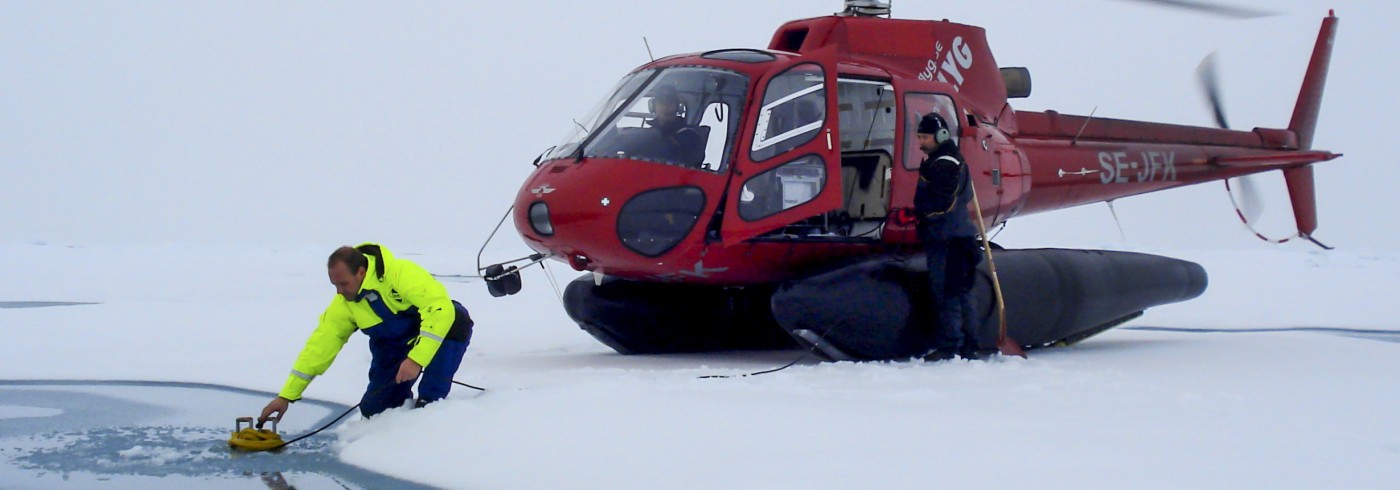The Swedish icebreaker Oden served as the research platform, while the actual research areas was selected based on the prevailing ice situation, particularly in the area around the North Pole.
Nearly impenetrable ice
The expedition was a follow-up to LOMROG, which was conducted in 2007. During LOMROG, data were gathered from the areas north of Greenland, 83–87°N, where no surface-going vessel had ever been before. The researchers were particularly interested in the Lomonosov Ridge, a mountain ridge on the ocean floor. To break through the nearly impenetrable icepack, Oden was assisted by one of the world’s most powerful icebreakers, the Russian 50 Let Pobedy.
In 2009 Oden operated without the assistance of another icebreaker. The expedition focused on the areas around the North Pole, although the area northeast of Greenland also was included.
The Continental Shelf Project
The Danish researchers mainly worked on the Continental Shelf Project, which is affiliated with the UN Convention on the Law of the Sea (UNCLOS) regarding national claims to the ocean floor. Using advanced multi-beam 3D echo sounding, seismology, and water and sediment samples, the researchers gathered information about the appearance and structure of the ocean floor. A group of marine geologists from Stockholm University also took part in the Danish project.
Swedish projects
Swedish researchers also worked onboard on research projects in the fields of animal ecology and marine geology.
Cyclops, arrow worms, and krill was studied in a project entitled ”Carnivorous Zooplankton – Their Role in Arctic Food Webs”. This research will contribute to an understanding of the ocean’s ecosystem and, in particular, the function of the free water mass in the polar region. A deeper understanding of how the ocean’s ecosystems work is essential to our ability to use ocean resources in a sustainable manner.
A sequence of sediment cores was collected from the slope of the Lomonosov Ridge as part of a project called ”Reconstructing Central Arctic Ocean Paleoceanography Using Sediment Cores from the Lomonosov Ridge”. The sediment cores could provide answers to questions about how the dynamics of the inland ice sheets have affected the global climate.
The expedition started and ended in Longyearbyen in Svalbard.
Research leaders
Christian Marcussen
GEUS
Martin Jakobsson
Stockholm University
Kajsa Tönnesson
University of Gothenburg
Ludwig Löwemark
Stockholm University







